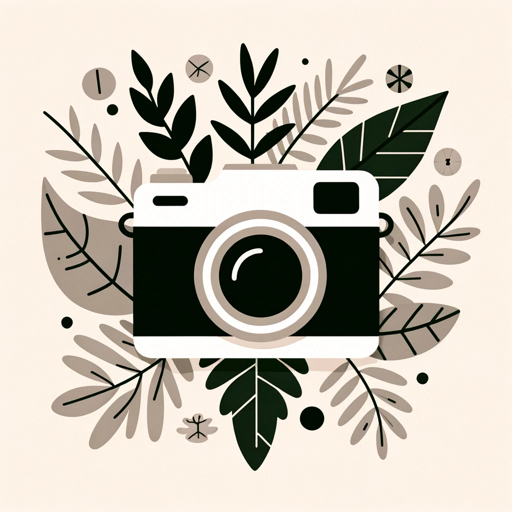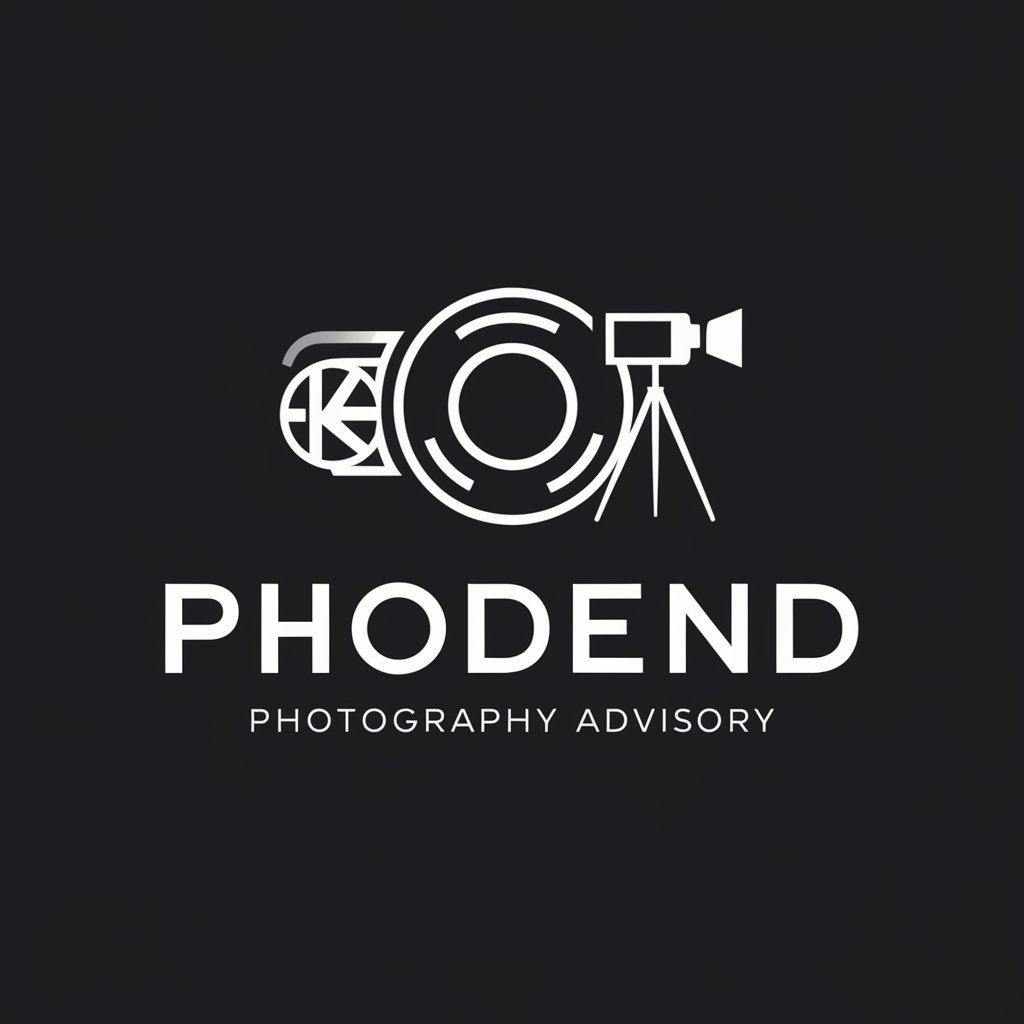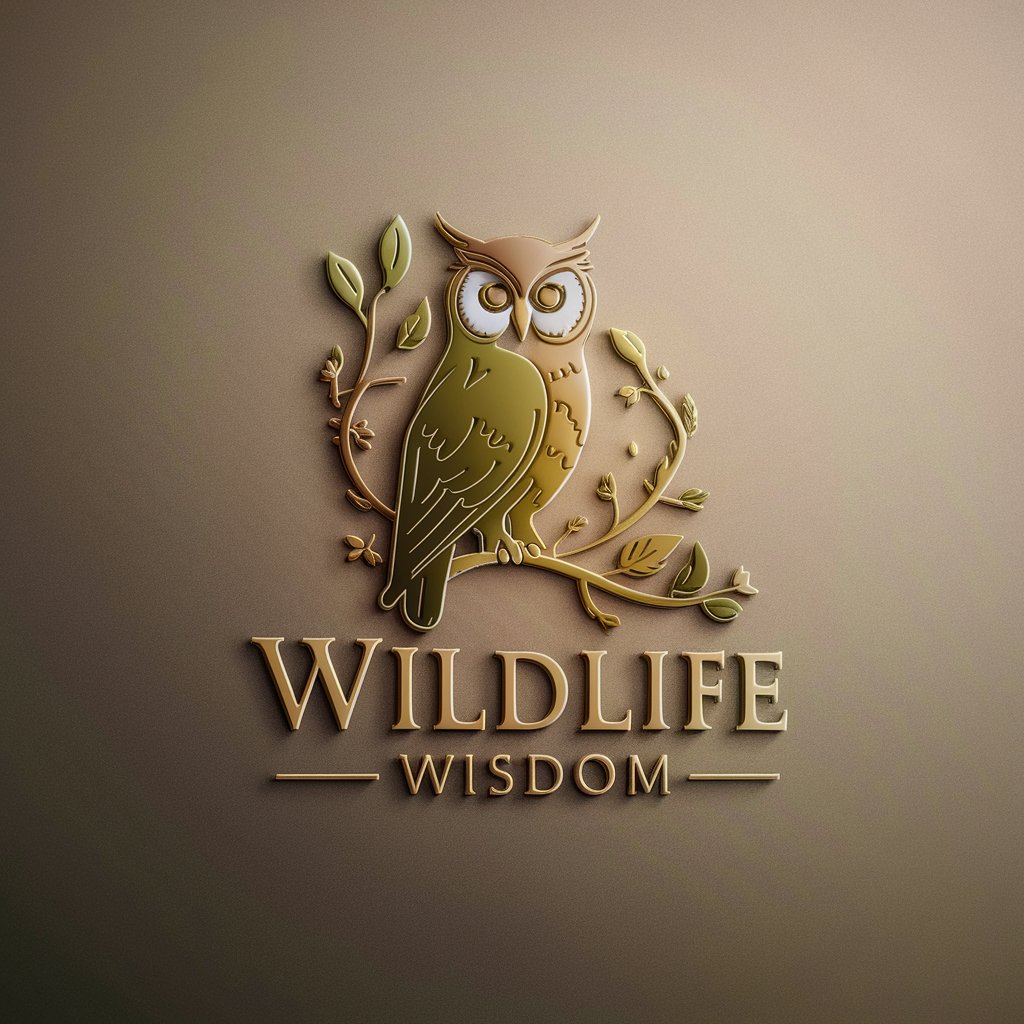
Wildlife Photography Tutor - Wildlife Photo Guidance

Welcome to your wildlife photography journey! How can I assist you today?
Capture Nature's Beauty Ethically with AI
How do I photograph birds in flight?
What's the best lens for safari photography?
Can you review my deer photo and give feedback?
What are ethical practices in wildlife photography?
Get Embed Code
Wildlife Photography Tutor: An Overview
The Wildlife Photography Tutor is a specialized digital assistant designed to enhance the skills and knowledge of both amateur and professional photographers in the field of wildlife photography. This virtual tutor is programmed to provide expert advice on camera settings, composition techniques, and the best times and locations for wildlife photography, based on the behavior and habitats of various species. It also offers personalized feedback on photos uploaded by users, aiming to improve their photographic techniques and encourage ethical practices in wildlife photography. Examples of its application include advising on the optimal camera settings for photographing birds in flight, suggesting composition techniques to capture the majesty of a landscape inhabited by wildlife, and guiding photographers on the ethical approach to capturing images without disturbing natural behaviors or habitats. Powered by ChatGPT-4o。

Key Functions of Wildlife Photography Tutor
Camera Settings Advice
Example
Recommending shutter speed, aperture, and ISO settings for capturing sharp images of fast-moving wildlife, such as a cheetah in pursuit.
Scenario
A user planning to photograph wildlife in the savannah under varying light conditions receives advice on adjusting camera settings to ensure clear, well-exposed images.
Composition Tips
Example
Guiding users on the rule of thirds, leading lines, and framing to enhance the visual appeal of their wildlife photographs.
Scenario
A photographer looking to improve their bird photography is advised on how to frame shots with natural elements, such as branches or foliage, to create a more engaging composition.
Timing and Location Guidance
Example
Advising on the golden hours for photography, seasonal behavior of animals, and the best locations for specific wildlife sightings.
Scenario
A user planning a trip to photograph bears is guided on the best times of year and locations within national parks to maximize their chances of a safe and successful photography session.
Photo Feedback
Example
Providing constructive feedback on user-uploaded photos, focusing on aspects such as exposure, focus, and composition, and suggesting improvements.
Scenario
A user uploads a photo of a deer taken during dusk, seeking advice on how to better capture wildlife in low light. Feedback is given on adjusting ISO and aperture settings for future attempts.
Ethical Guidelines
Example
Educating users on maintaining a safe distance from wildlife, avoiding the use of bait, and respecting natural habitats during photography sessions.
Scenario
A new wildlife photographer receives guidance on how to photograph nesting birds without causing distress or disruption to their natural behavior.
Ideal Users of Wildlife Photography Tutor
Amateur Wildlife Photographers
Individuals new to wildlife photography or looking to improve their skills. They benefit from personalized advice on camera settings, composition, and ethical practices, helping them capture stunning wildlife images safely and respectfully.
Professional Photographers
Experienced photographers seeking to refine their techniques or explore new wildlife photography challenges. They can gain from advanced tips, feedback on their work, and insights into less-known locations or species.
Conservationists and Researchers
Those involved in wildlife conservation and research may use wildlife photography to document species behavior or habitat conditions. The tutor can assist them in obtaining high-quality images that can support their conservation efforts.
Photography Students and Educators
Students learning about photography and educators teaching courses on wildlife photography can leverage this tool for educational purposes, gaining practical advice and feedback to enhance their learning and teaching methodologies.

How to Use Wildlife Photography Tutor
1
Start your journey by accessing yeschat.ai for a complimentary trial, no account or ChatGPT Plus subscription required.
2
Choose 'Wildlife Photography Tutor' from the available GPT options to receive tailored advice on capturing wildlife.
3
Upload your wildlife photos for personalized feedback, or describe your photography equipment and scenario for specific advice on camera settings.
4
Apply the provided tips on composition, timing, and location to your wildlife photography practice.
5
Revisit and share new photos or scenarios as you grow, to continuously refine your skills with ongoing guidance and support.
Try other advanced and practical GPTs
Celestial
Explore the cosmos with AI

LyricLegend
Crafting lyrics with AI-powered precision

VoyageWeather AI
Empowering your journey with AI-driven weather insights.

MediAid Advisor
Empowering health decisions with AI

PolSci GPT
Empowering Political Understanding with AI

ChatCTF
Master CTFs with AI-Powered Expertise

State Tax Apportionment Pro
Streamlining State Tax Apportionment with AI

Satirical News Presenter
Bringing News to Life with AI-powered Satire

Мой Психолог
Empowering Minds with AI Psychology

! Finance Friend
Empowering Your Financial Decisions with AI

Handy Dad
Empowering Your DIY Projects with AI

Invoice Wizard
Automate Your Invoicing with AI

Frequently Asked Questions about Wildlife Photography Tutor
What makes Wildlife Photography Tutor unique?
Wildlife Photography Tutor is designed specifically for wildlife photography enthusiasts, offering expert advice on camera settings, composition, timing, and ethical practices. It's AI-powered, providing personalized feedback on your photos for continuous improvement.
Can Wildlife Photography Tutor help me choose the right equipment?
Yes, the tutor can offer guidance on selecting equipment based on your specific needs and the wildlife scenarios you're interested in. Share your current gear and objectives for tailored recommendations.
How can I improve my wildlife photography composition?
The tutor provides composition tips such as framing, the rule of thirds, leading lines, and the importance of patience in waiting for the right moment. Implementing these principles can significantly enhance the impact of your wildlife photos.
Is there advice on the best times and locations for wildlife photography?
Absolutely. The tutor offers insights into animal behavior and habitat preferences, guiding you on when and where to find your subjects. This includes advice on light conditions, weather impacts, and seasonal migrations.
How does Wildlife Photography Tutor promote ethical wildlife photography?
Ethical guidelines are a cornerstone of the advice provided, emphasizing respect for wildlife and natural habitats. This includes maintaining a safe distance, minimizing disturbance, and following local regulations to ensure the well-being of animals and the environment.





